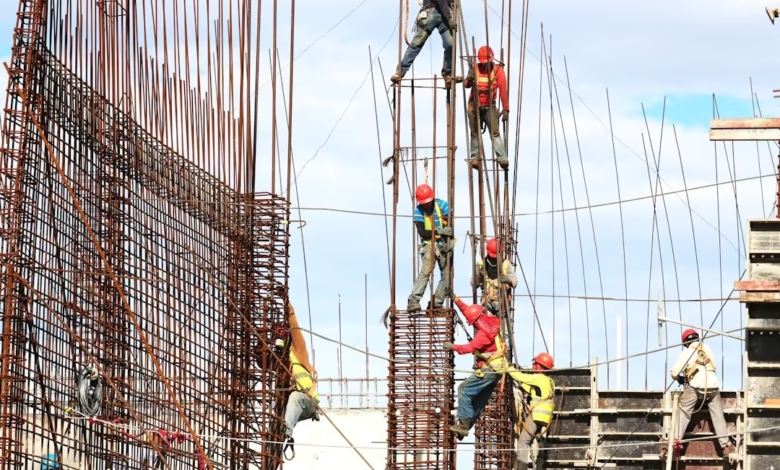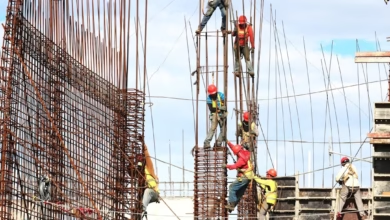Exploring Construction Metals: The Impact of Steel, Aluminum, and Alloys on Sustainable Building Practices

In the ever-evolving world of construction, the choice of materials plays a pivotal role in determining the strength, durability, and sustainability of buildings. Among these materials, construction metals stand out as essential components that not only support architectural integrity but also contribute to innovative building practices. This article delves into the various types of metals used in construction, primarily focusing on ferrous metals like steel and non-ferrous metals such as aluminum and copper. We will explore the significance of metal alloys in enhancing the properties of these base metals, allowing for greater resilience against challenges such as metal corrosion and wear. Moreover, with the growing emphasis on sustainable practices, we will discuss the importance of metal recycling and sustainable metal production within a circular economy. As we navigate through the landscape of industrial metals—ranging from precious metals like gold and silver to energy metals such as lithium and palladium—we will uncover the trends and advancements shaping the future of construction. Join us as we explore the vital role of metals in building materials, paving the way for innovative and sustainable construction solutions.
- 1. Understanding Construction Metals: An Overview of Ferrous and Non-Ferrous Options
- 2. The Role of Metal Alloys in Modern Building Materials: Enhancing Strength and Durability
- 3. Sustainable Metal Production and Recycling: The Future of Construction Metals in a Circular Economy
1. Understanding Construction Metals: An Overview of Ferrous and Non-Ferrous Options
Construction metals play a vital role in the building and construction industry, providing essential structural integrity, durability, and aesthetic appeal. They can be broadly categorized into two main types: ferrous and non-ferrous metals, each with unique properties and applications.
Ferrous metals, primarily composed of iron, are known for their strength and magnetic properties. Steel, an alloy of iron and carbon, is the most commonly used ferrous metal in construction due to its high tensile strength, versatility, and cost-effectiveness. It is widely employed in frameworks, beams, and reinforcements. However, ferrous metals are susceptible to metal corrosion, which necessitates protective coatings or treatments to enhance longevity.
On the other hand, non-ferrous metals, which do not contain significant amounts of iron, offer distinct advantages in specific applications. Aluminum is a lightweight, corrosion-resistant metal that is increasingly used in construction for window frames, roofing, and siding. Its excellent workability and recyclability align with sustainable metal production practices. Copper is another non-ferrous metal known for its conductivity and malleability, making it an ideal choice for electrical wiring and plumbing systems.
Other non-ferrous options include zinc, which is often used as a protective coating for steel to prevent corrosion, and precious metals like gold and silver, which find limited application in construction but are essential in decorative elements and jewelry metals. Additionally, rare earth metals play a crucial role in modern technology, powering devices and renewable energy solutions.
Understanding the properties of these metals is essential for effective metal fabrication and metallurgy in construction projects. The rise of metal recycling initiatives has also underscored the importance of sustainable practices in the industry, promoting the reuse of base metals and reducing the demand for new metal mining.
As construction continues to evolve, emerging trends such as the use of 3D printing metals and advanced metal alloys are reshaping how buildings are designed and constructed. Furthermore, the growing interest in gold investing and silver investing reflects the broader context of metal commodities in financial markets, highlighting the intrinsic value of these materials beyond their industrial applications.
In conclusion, the selection of construction metals—whether ferrous or non-ferrous—depends on the specific requirements of the project, including strength, weight, resistance to corrosion, and sustainability. Understanding these materials is crucial for architects, engineers, and builders aiming to create efficient and durable structures.
2. The Role of Metal Alloys in Modern Building Materials: Enhancing Strength and Durability
In contemporary construction, metal alloys play a pivotal role in enhancing the strength and durability of building materials. The combination of various metals through metallurgy creates alloys that exhibit superior properties compared to their individual components. For instance, steel, an alloy primarily composed of iron (a ferrous metal) and carbon, is renowned for its high tensile strength, making it a preferred choice for structural applications in construction.
Similarly, aluminum, a non-ferrous metal known for its lightweight nature and resistance to corrosion, is often alloyed with elements like copper and zinc to improve its mechanical properties. These aluminum alloys are particularly beneficial in applications where weight reduction is essential, such as in aerospace and automotive industries, where they contribute to fuel efficiency and overall performance.
The use of metal alloys extends beyond just strength; they also enhance durability against environmental factors. For example, alloys designed with resistance to metal corrosion are critical in areas exposed to harsh weather conditions, ensuring longevity and reducing maintenance costs. This aspect is increasingly relevant as industries shift towards sustainable metal production practices, focusing on the longevity of materials to minimize waste and encourage metal recycling.
Furthermore, the rise of advanced fabrication techniques, including 3D printing metals, has revolutionized how metal alloys are utilized in construction. This innovation allows for the creation of complex structures with optimized material usage, thereby reducing the need for excess raw materials and promoting sustainable practices in metal mining and production.
In the context of precious metals, while metals like gold and silver are primarily associated with jewelry and investment, their properties can also be leveraged in construction, particularly in specialized applications requiring high resistance to corrosion and wear. Rare earth metals, although not commonly used in traditional building materials, are becoming increasingly important in the development of high-tech construction solutions.
In summary, metal alloys are indispensable in modern building materials, providing enhanced strength and durability while promoting sustainable practices through efficient resource utilization and recycling. Their application across various sectors—from construction to aerospace—demonstrates the versatility and essential role of metals in today's industry.
3. Sustainable Metal Production and Recycling: The Future of Construction Metals in a Circular Economy
The construction industry is undergoing a significant transformation towards sustainability, and the focus on sustainable metal production and recycling plays a crucial role in this evolution. As we transition into a circular economy, the demand for metals—both ferrous metals like steel and non-ferrous metals such as aluminum and copper—continues to rise. However, the conventional methods of metal mining and production can be environmentally taxing.
Sustainable metal production emphasizes reducing the carbon footprint associated with the extraction and fabrication processes. Techniques such as using renewable energy sources in metallurgy and improving energy efficiency during metal fabrication are becoming more prevalent. Furthermore, advancements in 3D printing metals are revolutionizing how construction metals are produced, allowing for reduced waste and enhanced material efficiency.
Metal recycling is at the heart of a circular economy. By reprocessing base metals like aluminum, steel, and zinc, the construction industry can significantly lower the demand for new metal mining, which often involves the extraction of precious and rare earth metals. Recycling not only conserves natural resources but also minimizes metal corrosion and degradation that can occur during the lifecycle of construction materials. With effective recycling programs, metals can be reused multiple times without losing their inherent properties, making them more sustainable.
Incorporating recycled metals into construction projects also aligns with the growing trend of eco-friendly building practices. Architects and builders are increasingly sourcing materials that include recycled content, resulting in a reduction of waste sent to landfills. This shift not only supports environmental goals but also offers economic benefits, as recycled metals can often be less expensive than their newly mined counterparts.
As the construction industry continues to embrace sustainability, the investment in metal commodities will shift. Investors looking into sectors such as gold investing or silver investing are likely to consider the long-term demand for recycled construction metals as part of their strategy. The integration of sustainable practices in metal production not only addresses environmental concerns but also positions the industry for future growth in an increasingly eco-conscious marketplace.
In summary, the future of construction metals in a circular economy hinges on sustainable metal production and effective recycling methods. By prioritizing the use of recycled ferrous and non-ferrous metals, the construction industry can pave the way for a more sustainable future while addressing the challenges of metal corrosion and resource depletion. This approach not only supports the environment but also enhances the economic viability of construction projects, making it a win-win for all stakeholders involved.
In conclusion, the significance of construction metals such as steel, aluminum, copper, and zinc cannot be overstated in today’s building landscape. Understanding the distinctions between ferrous and non-ferrous metals, along with the pivotal role of metal alloys, allows for the development of materials that enhance strength and durability while meeting the diverse needs of modern architecture and infrastructure. As we move towards a circular economy, sustainable metal production and recycling practices will become increasingly vital, ensuring that both industrial metals and precious metals contribute to a greener future.
The ongoing trends in metallurgy, including advancements in metal fabrication and the utilization of innovative materials like 3D printing metals, are revolutionizing the construction sector. Furthermore, as we explore the potential of energy metals and battery metals in various applications, the importance of responsible metal mining and recycling cannot be overlooked. By embracing these practices, the construction industry can not only reduce its environmental footprint but also support the larger goals of resource conservation and sustainability.
As we look ahead, the continued evolution of construction metals will play a crucial role in shaping the future of building materials. Whether for residential, aerospace, or automotive applications, the integration of these metals ensures that we are not only investing in robust structures but also fostering a sustainable environment for generations to come. The future of construction metals is bright, and staying informed about these trends will be essential for industry professionals and investors alike.





